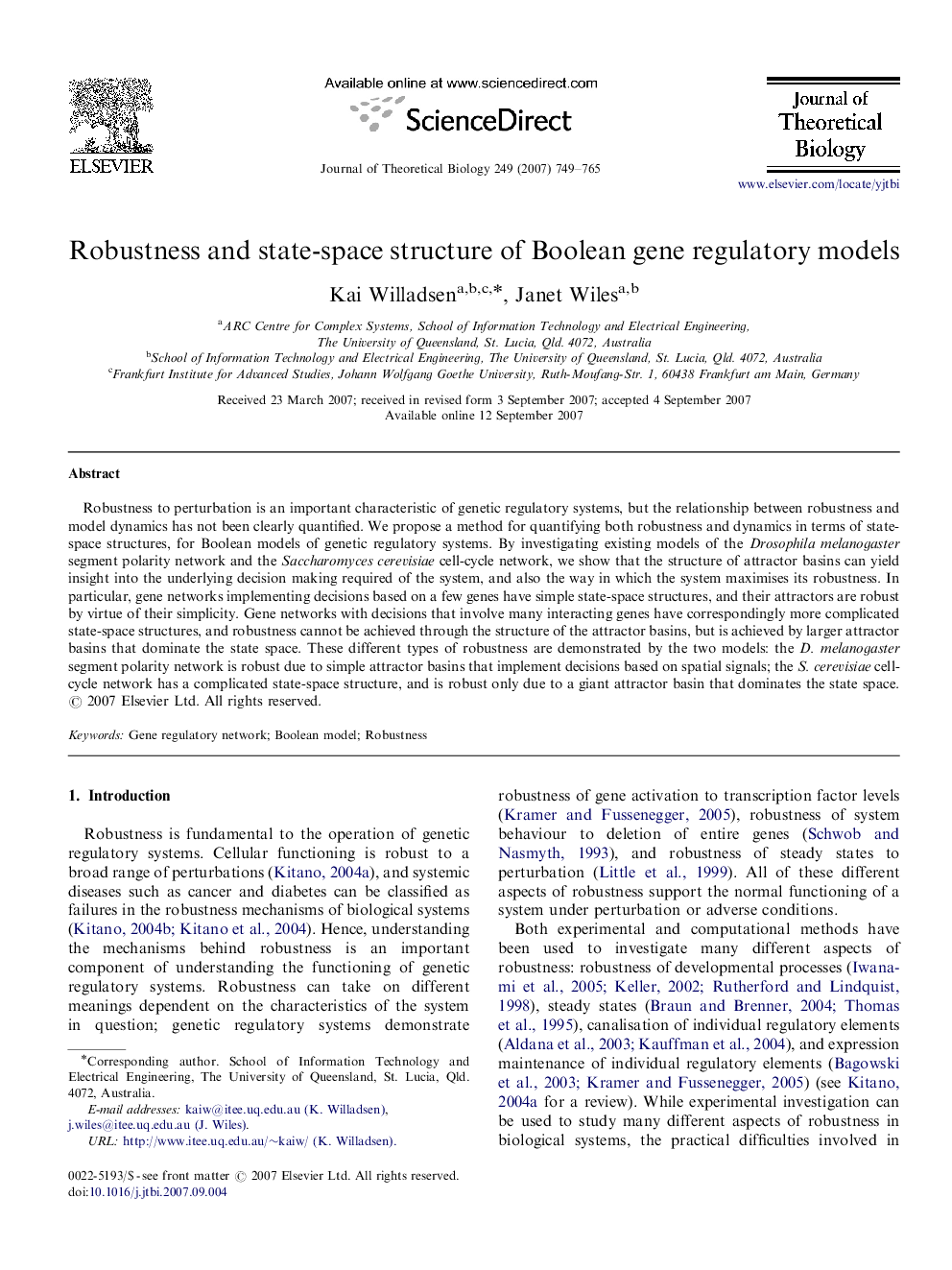| Article ID | Journal | Published Year | Pages | File Type |
|---|---|---|---|---|
| 4498765 | Journal of Theoretical Biology | 2007 | 17 Pages |
Robustness to perturbation is an important characteristic of genetic regulatory systems, but the relationship between robustness and model dynamics has not been clearly quantified. We propose a method for quantifying both robustness and dynamics in terms of state-space structures, for Boolean models of genetic regulatory systems. By investigating existing models of the Drosophila melanogaster segment polarity network and the Saccharomyces cerevisiae cell-cycle network, we show that the structure of attractor basins can yield insight into the underlying decision making required of the system, and also the way in which the system maximises its robustness. In particular, gene networks implementing decisions based on a few genes have simple state-space structures, and their attractors are robust by virtue of their simplicity. Gene networks with decisions that involve many interacting genes have correspondingly more complicated state-space structures, and robustness cannot be achieved through the structure of the attractor basins, but is achieved by larger attractor basins that dominate the state space. These different types of robustness are demonstrated by the two models: the D. melanogaster segment polarity network is robust due to simple attractor basins that implement decisions based on spatial signals; the S. cerevisiae cell-cycle network has a complicated state-space structure, and is robust only due to a giant attractor basin that dominates the state space.
